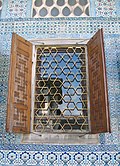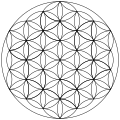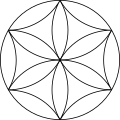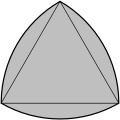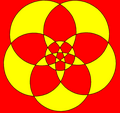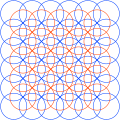| Square circle grid | |||||
|---|---|---|---|---|---|
| 1+ |  |  |  |  |  |
| 4 |  |  |  |  |  |
| 9 |  |  |  |  |  |
| Centered square lattice forms | |||||
| 5 |  |  |  |  |  |
| 13 |  |  |  |  |  |
 |  |  |  |  | |
| Triangular circle grid | |||||
| 1+ |  |  |  |  |  |
| 3 |  |  |  |  |  |
| 4 |  |  |  |  |  |
| 7 |  |  |  |  |  |
| 19 |  |  |  |  |  |
 |  |  |  |  | |
An overlapping circles grid is a geometric pattern of repeating, overlapping circles of an equal radius in two-dimensional space. Commonly, designs are based on circles centered on triangles (with the simple, two circle form named vesica piscis ) or on the square lattice pattern of points.
Contents
- Triangular grid of overlapping circles
- Cultural significance
- Construction
- Other variations
- Related concepts
- Square grid of overlapping circles
- See also
- References
- External links
Patterns of seven overlapping circles appear in historical artefacts from the 7th century BCE onward; they become a frequently used ornament in the Roman Empire period, and survive into medieval artistic traditions both in Islamic art (girih decorations) and in Gothic art. The name Flower of Life is given to the overlapping circles pattern in New Age publications.
Of special interest is the hexafoil or six-petal rosette derived from the seven overlapping circles pattern, also known as the Sun of the Alps from its frequent use in alpine folk art in the 17th and 18th century.


